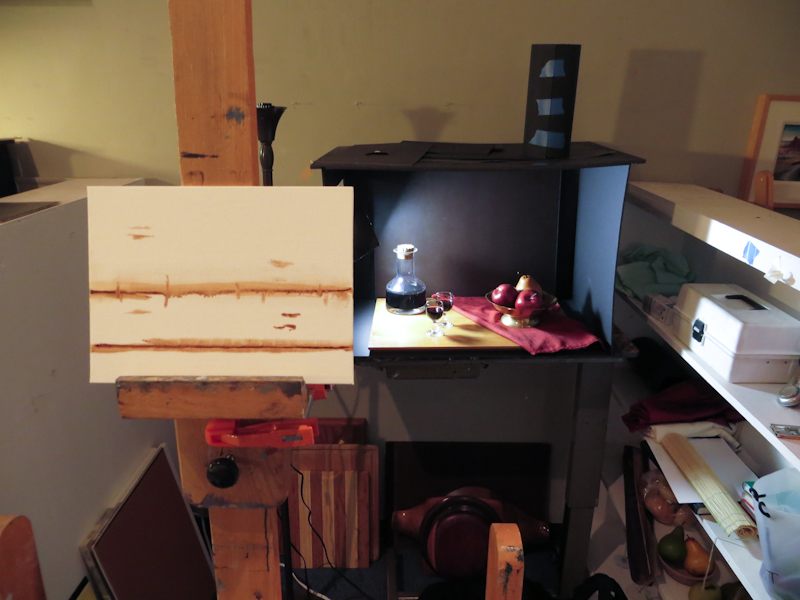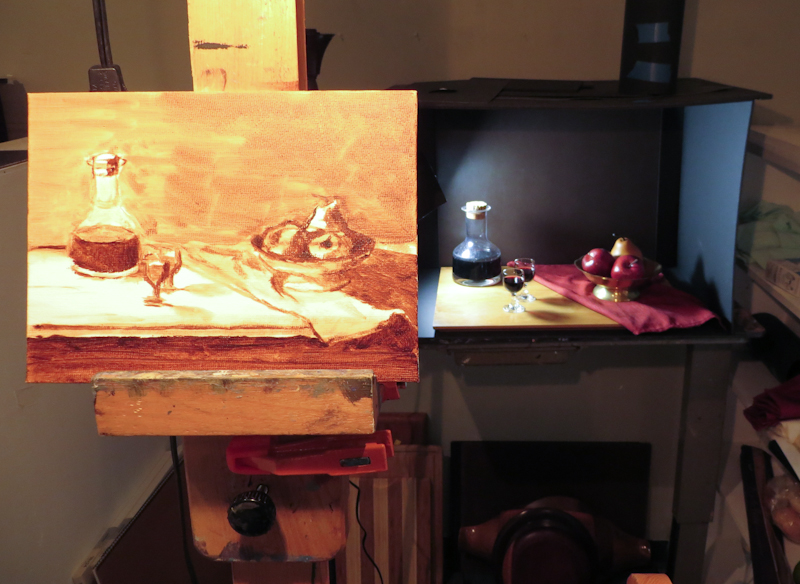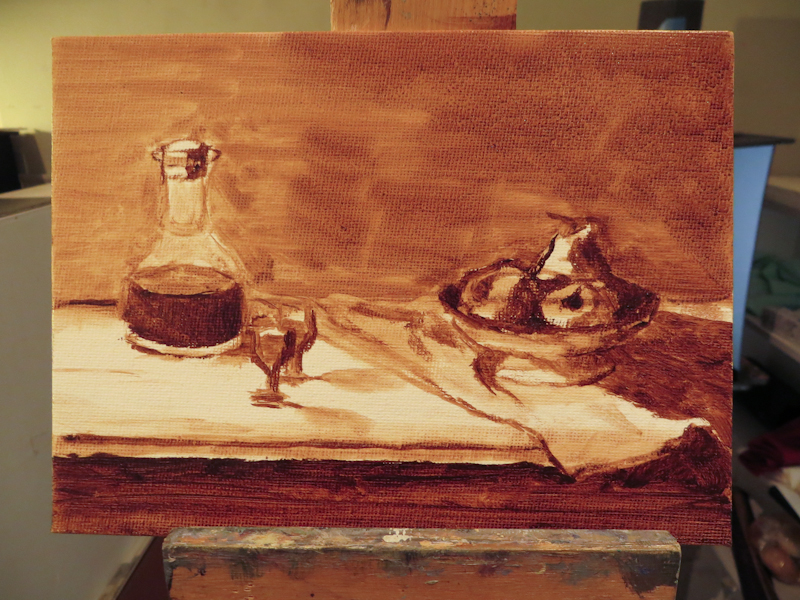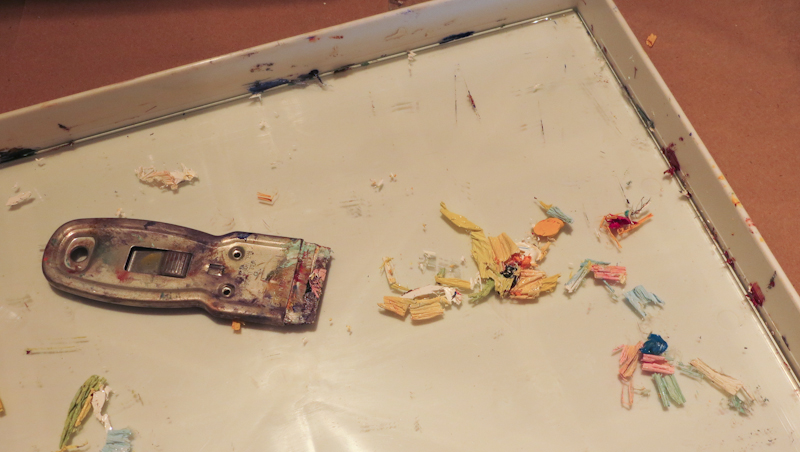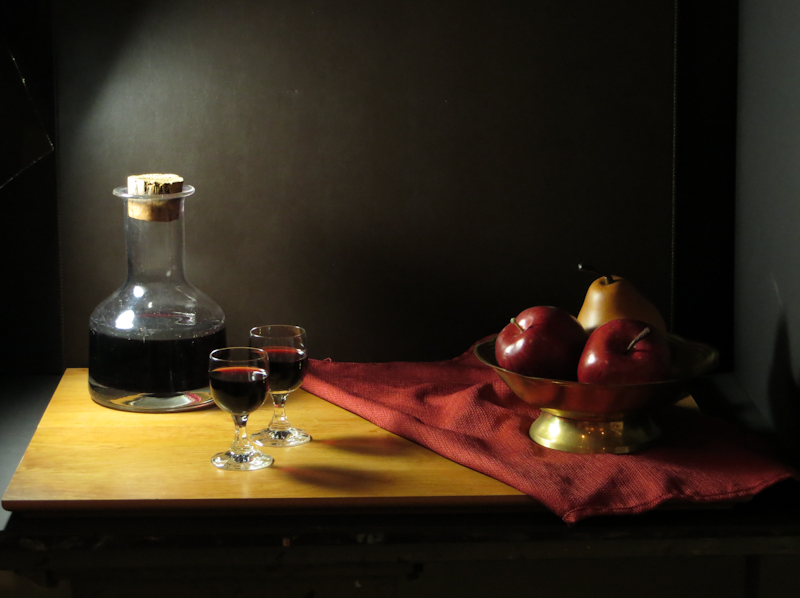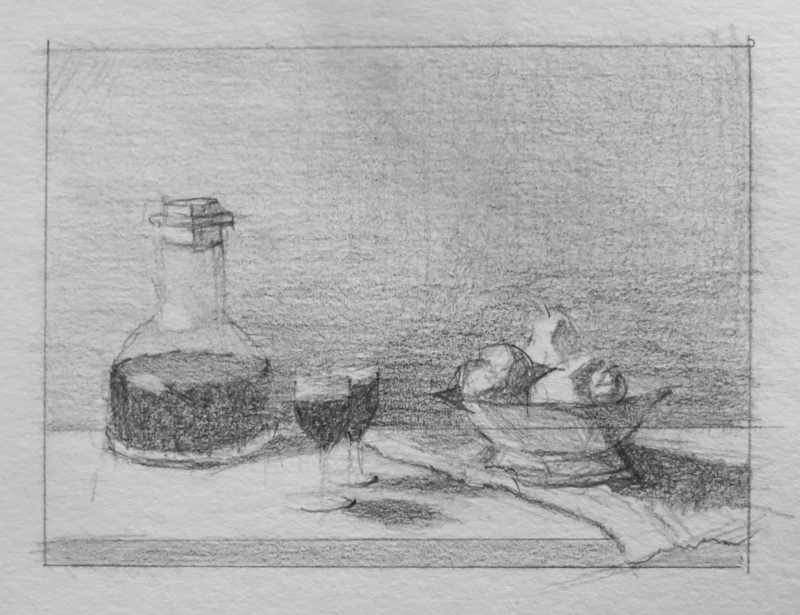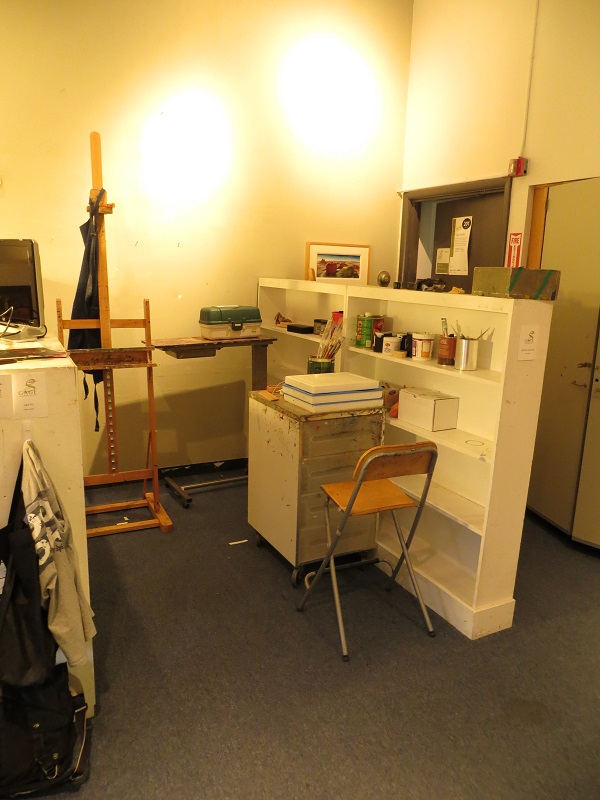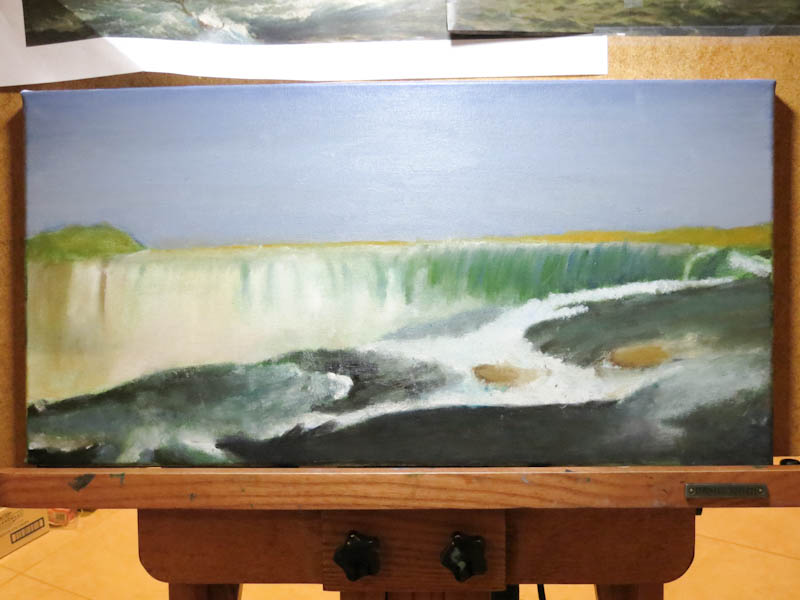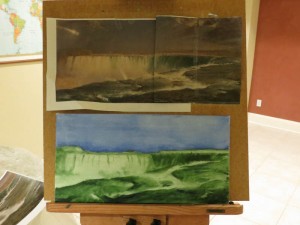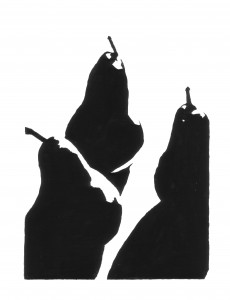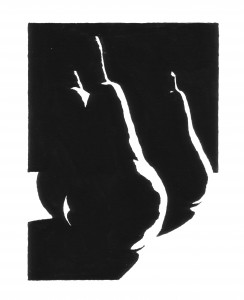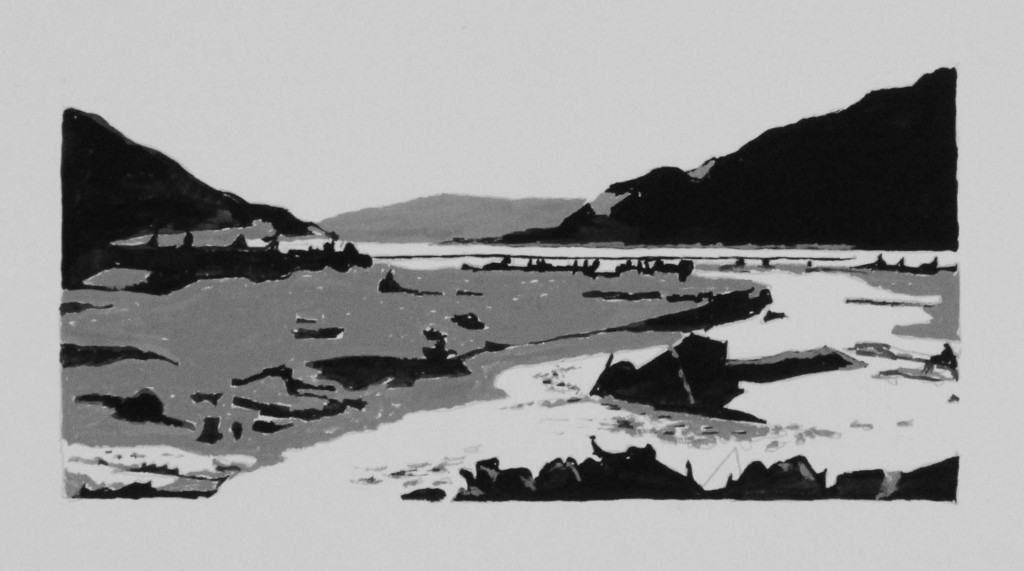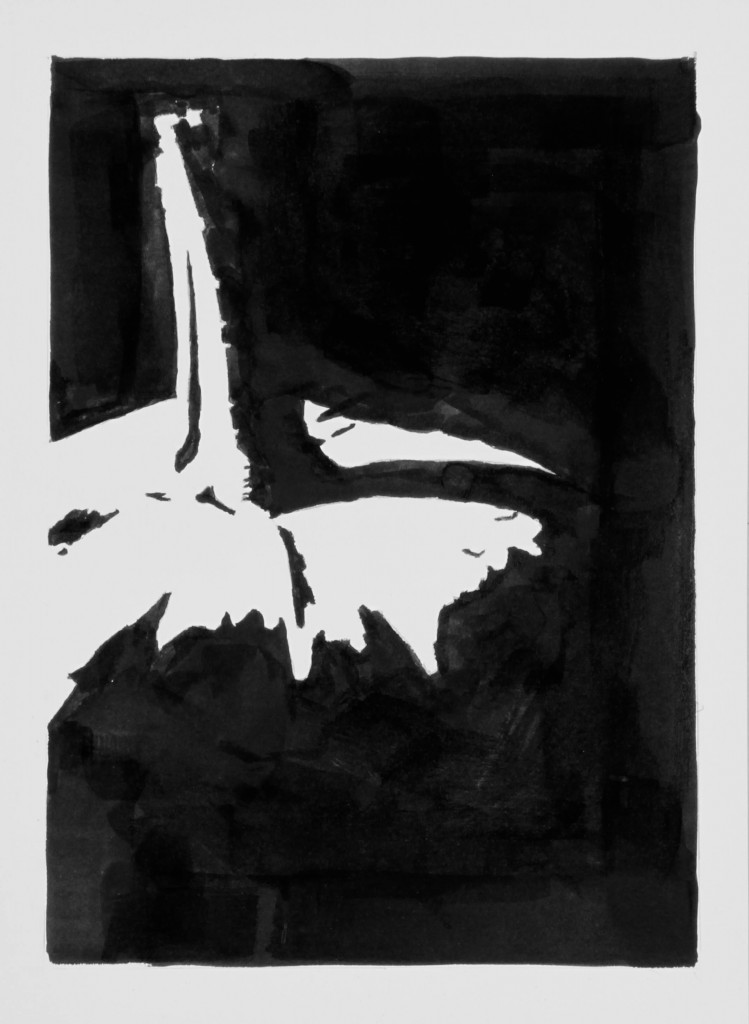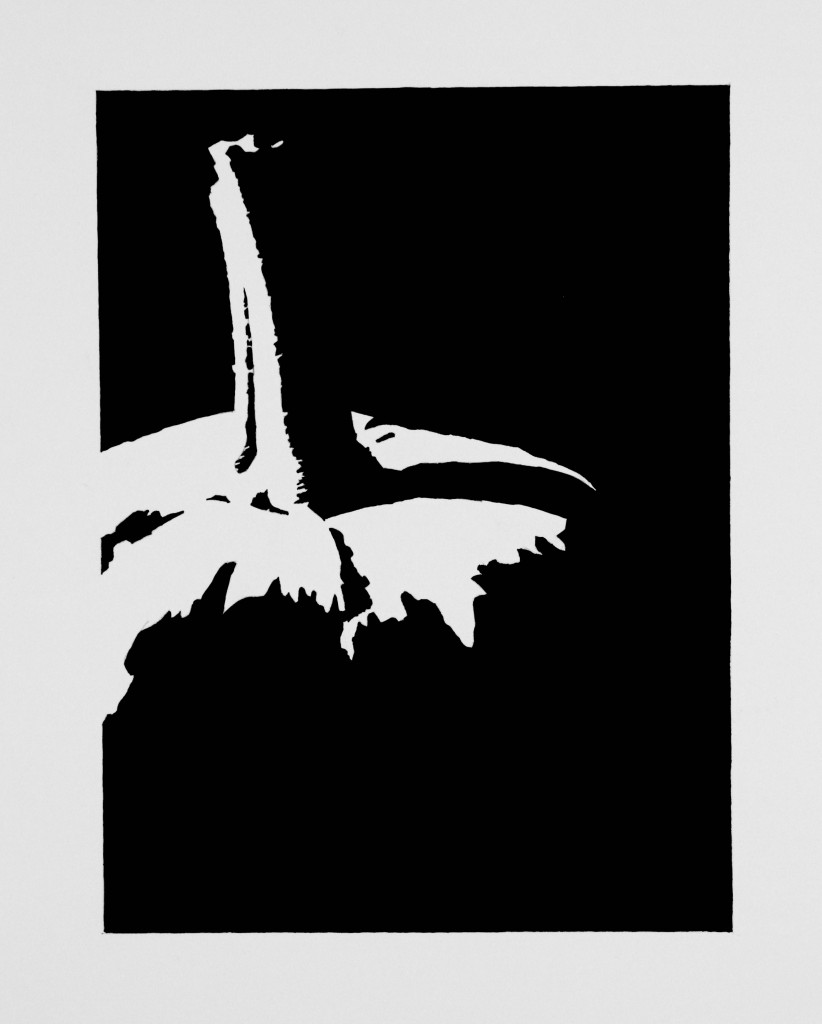After organizing my space and cleaning palette boxes and brush tanks, I finally got a chance to work on a color study for my wine-and-apples scene. Gary suggested working small and spending no more than two hours. This was to ensure that the painting remained in the realm of a study.
I decided to do a 6″ x 8″ study for a painting that will likely be 18″ x 24″. My approach was to draw the image with a paintbrush using burnt umber thinned with OMS, and then block in the value masses.
I spent about an hour working with burnt umber and had just started mixing up colors for the apples when I realized that the incandescent lamp on my easel didn’t match the 5500k daylight bulb on the scene. When I matched the paint perfectly at the easel and then brought a sample into the scene, it looked like a garish bluish purple. I decided to call it a day so that I could get another 5500k lamp for the easel.
As I was heading out, one of my classmates asked my why I did an under painting for a color study, instead of just laying color directly on a bare canvas. I suppose the answer was that I did it out of habit. When I started, my intention was to just draw the outlines in burnt umber, but then I got into it and kept adding more shadows and details until I had an under painting. I guess this is why Gary suggested keeping the entire exercise under an hour.

